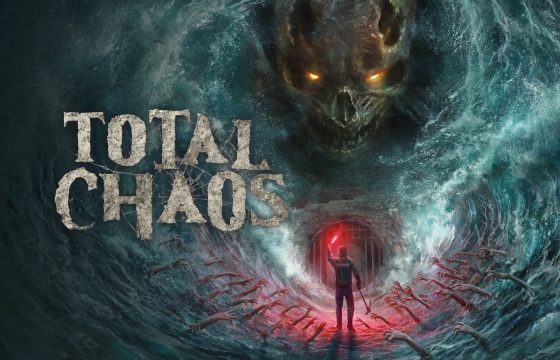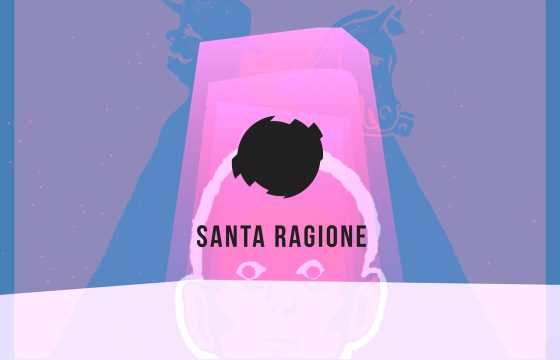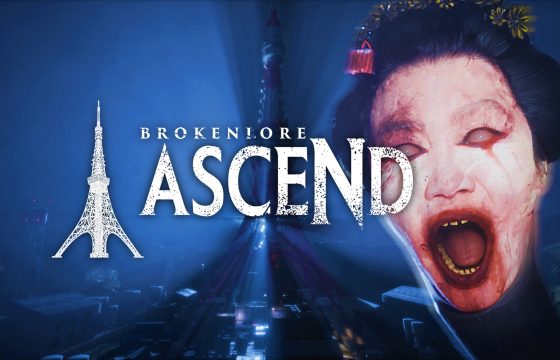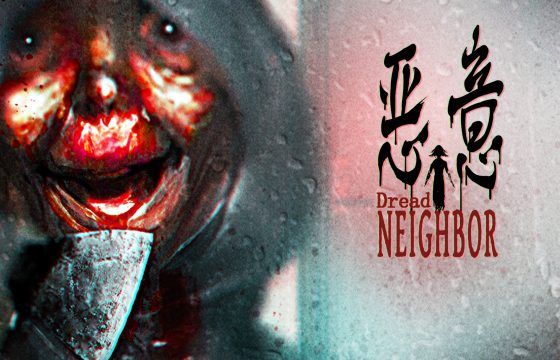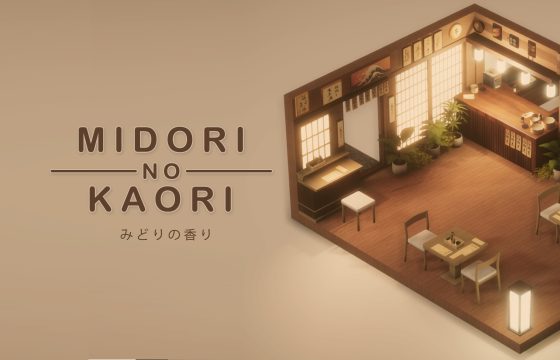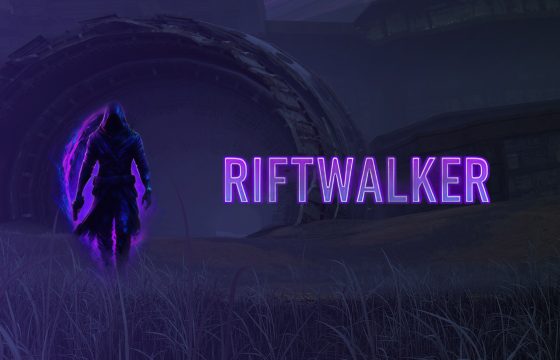To celebrate the launch of the Kickstarter campaign for Fallen Tear: The Ascension, we had the pleasure of conducting an in-depth interview with Winter Crew’s Creative Director and Founder, Stephen Manalastas, and Producer and Project Manager, Alec Balingao.

To celebrate the launch of the crowdfunding campaign for Fallen Tear: The Ascension, we took the opportunity to conduct an in-depth interview with Winter Crew, the talented Filipino-based game studio behind this ambitious project.
Represented by Creative Director Stephen Manalastas and Producer Alec Balingao—whom we thank in advance for their time, especially given the intense and challenging period they’ve recently navigated—this interview offers a unique chance to immerse ourselves in the project.
This virtual journey provides insight into their upcoming creation, traces the origins of the team, and explores the emotions and aspirations that fuel their work. We delve into their ambitions and hopes as they take this significant first step towards the future of Fallen Tear: The Ascension.
However, before we delve into the interview, let’s take a moment to introduce today’s guests and the exciting project they represent.
A resounding welcome to Winter Crew, the creators of Fallen Tear: The Ascension
If you missed our main coverage, which you can catch up on through the following link, allow us to briefly introduce you to Winter Crew, the creators of Fallen Tear: The Ascension, before diving into the interview.
Representing Winter Crew today are veteran Creative Director and Founder Stephen Manalastas, along with the talented young Producer and Project Manager Alec Balingao. Founded in 2020 in the vibrant Malate district of Manila, Philippines, Winter Crew is an independent game studio under the umbrella of CMD Studios, a Philippines-based parent company.
Although Fallen Tear: The Ascension is their first collaborative project, the team members are far from newcomers to the gaming world. They bring a wealth of experience from working with international clients, including AAA game studios and leading animation firms.
Driven by ambition and a bold vision, Winter Crew has embarked on a thrilling new venture with Fallen Tear: The Ascension. This epic 2D JRPG Metroidvania adventure invites players to explore the vast world of Raoah—a magical and mysterious land beset by fearsome beasts and corrupt gods, in dire need of a hero to restore balance and fend off the encroaching corruption.
If you’re eager to delve deeper into the project, and our in-depth demo analysis hasn’t quite satisfied your curiosity, Winter Crew has prepared something special. They’ve put together a captivating video where Creative Director Stephen Manalastas that delves into the origins, inspirations, and vision behind Fallen Tear: The Ascension.
With the stage set and introductions complete, let’s immerse ourselves in the interview. Enjoy the read!
The Interview
Let’s start with an introductory question to kick off the interview and delve into your story. Could you tell us about the origins of Winter Crew—how and when it all began? We’d love to hear about your beginnings, your vision, and what motivated you to embark on this journey into the gaming world.
Winter Crew was formed under CMD Studios in 2020 to make Fallen Tear: The Ascension. CMD Studios has been a running art studio for 10 years, and we render services such as game design, illustration, and animation. It has always been our dream to make our own game ever since, but we all know that making your own game is financially hard, so we started working for other people to save some money to boost our own production.
As for me (Stephen), I grew up playing classic JRPG games like Suikoden and Valkyrie Profile and platformer games such as Castlevania: SOTN and Megaman. I always had a fun childhood playing games, and making FTA is a love letter for me to give back to the gaming community. I wanted to make a fun game they will remember and enjoy.
Your journey began in 2020 in the renowned Malate district, which, along with Ermita, forms the heart of commerce and tourism in Manila, the capital of the Philippines. The country is witnessing a remarkable surge in the gaming industry. As a studio, how do you perceive the gaming industry in your nation, and how do you aspire to contribute to the burgeoning Filipino gaming ecosystem?
There has definitely been notable progress in the gaming industry here in the Philippines. It seems that people are increasingly recognizing the potential of Filipino developers’ talents. My current contribution is to create a high-quality game and serve as a role model for fellow developers. Should our game achieve success, I hope to share the insights and knowledge we have gained throughout its development.
The question that has consistently fascinated us, and one you have likely contemplated among yourselves, is why Fallen Tear: The Ascension? What drove your decision to choose this video game for your studio’s debut in the gaming industry? Furthermore, what does Fallen Tear: The Ascension symbolize for each of you personally, and for your studio as a whole?
I have four principle guides when making this game:
- Is it something we can finish on time?
- Is it something my team can do?
- Is it something I can fund ?
- Is it something that has good community support?
Our decision to develop a 2D platformer Metroidvania game is a clear demonstration of our confidence in our guiding principles. This choice is not just a random decision but a strategic one that aligns perfectly with our team’s capabilities and the project’s requirements. As for the FTA, it symbolizes my deep-rooted love and passion for games.

In the first installment of your Devlog, published on May 17th, Stephen, Founder and Creative Director of the project, described Fallen Tear: The Ascension as a love letter to his gamer background, a passion that profoundly reshaped his life and guided his professional career. At this point, we would like to ask: what elements, what words comprise this letter? Does Stephen believe Fallen Tear: The Ascension is primarily a message to his younger self, the boy who grew up with video games, or is it more aimed at young enthusiasts, or even those seeking to transform their professional careers through gaming?
While making this game, I used all my knowledge and experience to make creative decisions for FTA, so it is likely a big part of my younger self. My only goal is to make fun games and share them with the world so that players who play them can also experience the fun that I have when playing games.

Fallen Tear: The Ascension is set in Raoah, a magical world rich with lush landscapes and a diverse array of inhabitants, all held in delicate balance by its pantheon. These ever peaceful gods worked harmoniously to keep the world in balance until a dark seed of corruption brought about war, suffering, and the downfall of Raoahn society. How did the imaginary fantasy universe of Raoah come into being? Furthermore, if you can share, will there be elements inspired by Filipino folklore or direct references to ancient Tagalog deities and other mythical figures from Filipino mythology?
I have always been a fan of High fantasy stories, so we build up a world based on D&D type of fantasy, something that only exists in our imagination; as for Filipino folklore, there are a few hints you will see here, but I don’t also want it to be too obvious since I am making for the gaming community as a whole not only for Filipinos, I wanted every gamer to appreciate the world we created.
One of the striking choices is how you’ve portrayed the world of Raoah, its characters, and even the enemies through your artistic direction—a style that highlights and almost exaggerates the colors, creating a vibrant, idyllic, and nearly saturated effect. This approach successfully preserves the essence of that world—once beautiful, now fragile, wounded, and scarred—or at least the memories older inhabitants have of its once peaceful state. Could you share what influenced you during the creative process to choose this artistic style and explain its purpose, both visually and communicatively?
It is difficult to create something out of nothing, and it is much more difficult to relay the creative messages to audiences that have different kinds of perceptions. So how did we create a world that is vast enough that it seems to have a life of its own? It is kind of simple, we simply love to showcase the world that we envision through our artistic sense and values in hopes of inspiring others as well.
Likewise with how we got inspired by other creatives within our industry, in the same way we place those kinds of feelings in our creative direction. We were inspired by the atmospheric world of Ori and the Blind Forest, the nostalgic game world of the Suikoden series, simple yet captivating art style of Planet of Lana, and other relevant game references that are a mixture of multitudes of references and thus, we found the world of Raoah.


What you showcased in the demo offers just a small glimpse of the vast world of Raoah—a game world that is extremely complex, dense, and characterized by immense biodiversity, featuring a total of 26 biomes, comparable in scale to an open-world. What was the foundation for building the world of Raoah? How much freedom will players have, and most importantly, what unique elements do you believe will set your open-world apart from others on the market?
One of the foundations of our world-building is the collective thoughts of the team, they are a collection of different kinds of tastes and experiences built from a series of back and forth ideation of building the game world.
You cannot create something without pouring your blood, sweat, and tears. In the same way you inhibit these kinds of things to your creations and as you get attached to those distinctive kinds of ideas, and collaborating them with your team with different palettes of ideas, we were able to put forward a series of suggestions of what looks good or what doesn’t seem to fit in our game with collective thoughts, forming them into a singular kind of thought.

After the introductory story, the player is free to choose where to start their adventure.
The term “unique” is a very difficult thing to coin out as everything that is unique came from an idea that is already formed. At the very least, we believe that what sets us apart from the others on the market are the things that you can do within the game. Our game is a collection of different kinds of references, by putting all the best practices and very fun features of those references, we try to create something that allows them to be thoroughly combined. That very thing is a tough concept and a very difficult thing to accomplish as oftentimes, having multiple best features from multiple references results in a very confusing and complex gameplay structure.
Among the most captivating elements in the demo are the hunting contracts. As we observed, these contracts play a significant role not only in the lore but also in character development, allowing the protagonist to grow more powerful with each acquired skill. This raises the question: will hunting, the contracts, and our reputation within the Hunt Guild be central to the overall experience, or will they serve as secondary features with no direct impact on the narrative progression?
Hunt Contracts are indeed one of the core features of our game but it isn’t the only central thing that revolves around the gameplay. By completing these contracts and increasing your Hunter Rank, Hira gains access to specialized combat skills. It isn’t counted as a secondary feature as it revolves around what we call “Hunter Skills”, which is one of our main three skill features.
However, it’s important to note that while Hunt Contracts are essential for character development, they don’t directly affect the narrative progression. The storyline and Hunt Contracts operate as separate plotlines.
In the demo, we noticed that Hira’s user interface features three distinct skill trees for character development: masteries, which are linked to various tiers (the only ones accessible in the demo), ascensions, and hunter skills. Could you provide more details on these three different enhancement systems for Hira and explain how players can use them to craft their playstyle? Will there be a significant degree of freedom in customizing the experience, or will the game guide us through this process?
We have three main features that revolve around the whole gameplay experience, which are the Ascension Skills, Masteries Skills, and Hunter Skills.
- Ascension Skills are used to traverse the world of Raoah, unlocking paths that are inaccessible through normal means. They are obtained by having Fated Bonds join you and earning trust points. As you find more Fated Bonds, you are eligible to obtain more ascension skills.
- Masteries Skills are a series of utilities and upgrades that aids Hira in both combat and traversal experience. These are obtained by completing various tasks around the gameworld in which you are awarded Fated Points. Fated Points are then used to unlock the masteries skills.
- Hunter Skills are specialized combat skills, obtained as you level up your Hunter Ranks by defeating unique bosses which are called rare hunts.

The game provides guidance on how to acquire these skills, but players have the freedom to prioritize which skills to unlock first. As you progress, you’ll naturally unlock these abilities through a series of events, creating a sense of continuous progression.
To gain Hunter Skills, defeat Rare Hunts. To obtain Ascension Skills, seek out Fated Bond companions to explore more of Raoah. To unlock Mastery Skills, complete specific tasks to earn Fated Points and access different skill tiers.
Another captivating feature that promises to enrich the gameplay experience of Fallen Tear: The Ascension is its Fated Bonds summoning system—special characters we will encounter during our adventures who offer their assistance. How will their recruitment and utilization be handled? Will we need to carefully cultivate relationships, interact with them, complete quests, and earn their trust? Or will they primarily serve as straightforward aides to deploy in combat?
Fated Bonds join Hira through a series of events tied to their unique stories. Some may require Hira to help them solve their problems, rescue someone in need, or simply join him because their goals align with Hira’s mission. Once they become part of Hira’s journey, you can strengthen their relationship. As the bond deepens, their skills also improve, making them more effective in aiding Hira on his adventure.
Bringing life to the complex cast of characters in Fallen Tear: The Ascension are a number of notable voice actors who have already made substantial contributions to video game voice acting, including Elsie Lovelock (as Durin), Brandon Hunt (as Hira), and Kelsey Maher (as Enid), among others. How are you approaching the game’s voice acting, and, importantly, what language will be spoken in Raoah? Will it be a familiar language or an artificial one that will only be understood through subtitles?
Before casting the voice overs, our strategy is to first complete the base storyflow and script for the entire game, or at least the majority of the main sections. This ensures that the voice actors can focus on the appropriate vocal emphasis without any confusion regarding the story. We want them to have a clear understanding of the overall narrative so they can effectively convey the concept and capture the essence of the in-game characters.
In the world of Fallen Tear: The Ascension—or more precisely, in Raoah— familiar languages are used, primarily English. However, some parts of the game feature a unique runic vocabulary known as the ancient language. This ancient tongue is used to describe skills that originate from a distant past.
Let’s conclude with a question that delves into your plans and provides a glimpse into the future of Fallen Tear: The Ascension. What new developments can we anticipate in the latter half of this year? When are you planning to launch your Kickstarter campaign, and do you have a specific release window in mind for Fallen Tear: The Ascension?
For our development plans in the latter half of this year, we aim to map out the polishing work scheduled for early next year.
Some key focus areas include:
- Enhancing gameplay features that emphasize the unique mechanics across our diverse environmental biomes.
- Fine-tuning the combat experience, both for Hira—the player-controlled character—and the balancing of enemy behavior, ensuring a smooth, enjoyable, yet challenging gameplay.
- Polishing the visual aesthetics of the environments, ensuring each biome retains its distinct and special appearance.
The plan for the first three quarters of this year is to complete the main gameplay features. Once that’s achieved, we will focus on refining the game. That said, we acknowledge that no project is without its challenges, and our team isn’t perfect. We anticipate hurdles along the way. A core philosophy of our production pipeline is to anticipate potential challenges during the main production phases and address them as they arise, continuing until the game is complete. By maintaining a cycle of planning, preparation, and execution, we aim to deliver the game at its highest quality.
Our Kickstarter campaign will launch on August 27th. In the week leading up to the launch, we plan to have select individuals try out the game in hopes they will help spread the word about the campaign.
We are targeting a release window of November 2025. This timing is intended to avoid clashes with other major releases and to align with the Christmas sales season, when many gamers are actively browsing store pages across various game distribution platforms.
The crowdfunding campaign for Fallen Tear: The Ascension is now live on Kickstarter
Before we wrap up, we’d like to extend a heartfelt thank you to Stephen and Alec. Despite their busy schedules leading up to the Kickstarter campaign launch, they took the time to answer our questions and share their invaluable insights. We wish them and the entire Winter Crew team the best of luck during this critical phase and hope they reach all their ambitious goals.
For the latest updates on the game and the Kickstarter campaign, stay tuned to our upcoming articles. If you’re excited about the project, don’t forget to add it to your Steam wishlist and follow the game’s X account for real-time news.
The Kickstarter campaign for Fallen Tear: The Ascension is now live. Choose the tier that suits you best, and support the developers as they embark on this thrilling journey with their debut IP.
That’s all for today. Until next time!


